Comparative Tram Studies: A Field Visit to Frankfurt
Morning all!
I was thinking that I might just as well utilise this blog for also posting trip reports centred on other tram systems aside from my usual front line dispatches, as I felt this approach might be well suited for allowing a comparative view of technical specifics and operational parameters in other cities.
So, may I just start with a photo strip from my recent visit to Frankfurt, where I was also able to try out my new camera which had arrived just the day before we left for our trip!
With roughly 717,000 residents, public transport in Frankfurt must by definition be extensive, and aside from the suburban railway lines (and, by extension, all other regional railway lines touching the city) is mainly based on the light rail lines – for simplicity referred to as underground – on a route length of 65 km as of 2016, and the tram system of roughly the same length. Tram and light rail do have several connecting points and share the main technical parameters except for platform heights and car width.

Travelling east on Bruchfeldstraße, S Type tram 222 was working Line 15 from Haardtwaldplatz in Niederrad to Southern Station. These trams are related to our NGT12, also being Bombardier Flexity Classic derivatives.
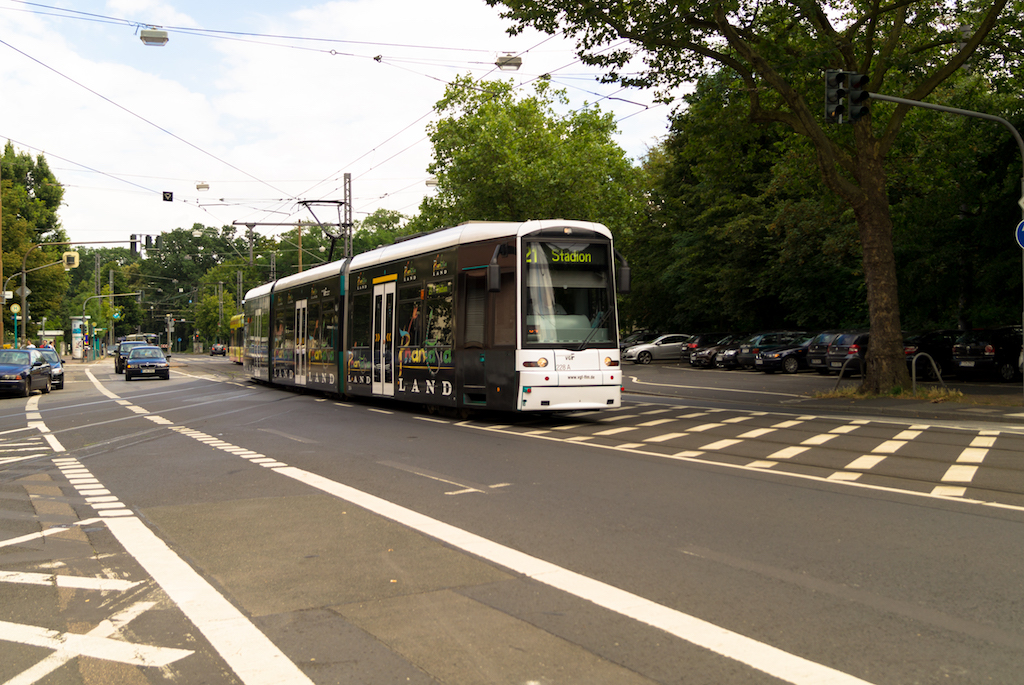
228 is one of several S Types advertising for the Phantasialand theme park, and is seen here working Line 21 for the Stadium. The S Type trams were procured from 2003 till 2007, providing a 420 kW power output and offering space for 115 seated and 64 + 6 standing passengers.
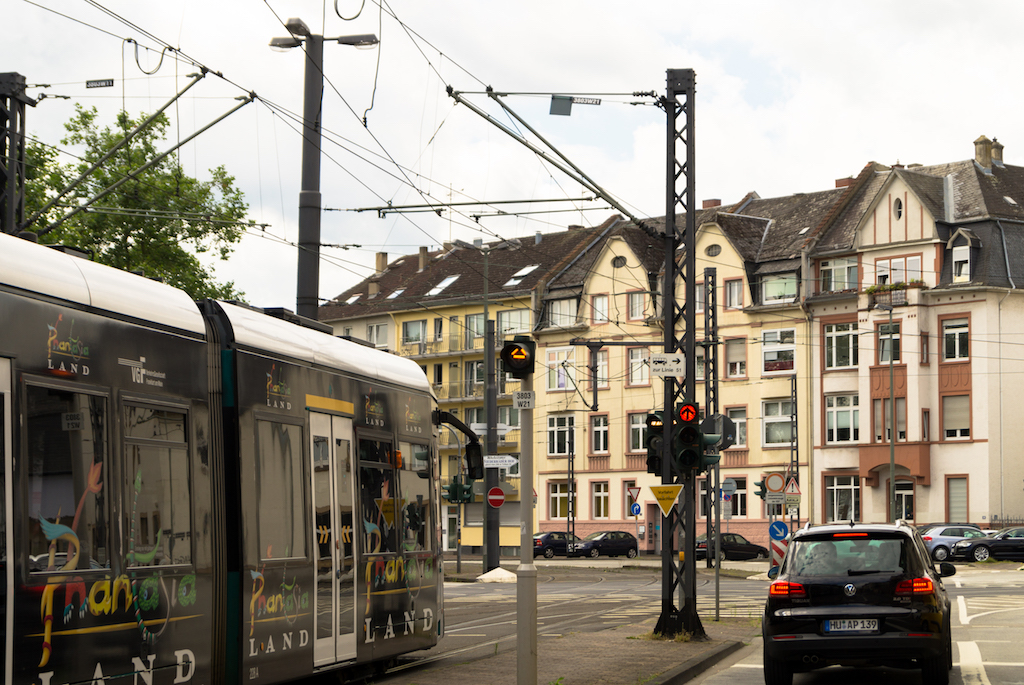
I also took a bit of time for a somewhat more professional look at other technical aspects such as signalling. Point control is, I understand, performed through RF transmission, with two types of point signals existing. This here is the newer variant with just one signal chamber, with the usual "arrowhead" symbols formed by independent line sections. This signal for Point 3803 W 21 can show Straight and Right, with point lock indicated by the base line (at the open end of the arrowhead) lighting up.
By contrast, our point signalling practice in Leipzig is based on the idea that points can be set left or right only, and point lock being indicated by an X symbol (properly referred to as W 0) in the chamber atop those with the arrowhead symbols, which in turn are referred to as W 12 for Right and Locked and W 13 for Left and Locked. Also, here in Leipzig, we only utilise the W 12 and W 13 aspects with base lines, but not the variants without base line which are designated W 2 and W 3 for Right and Left respectively.
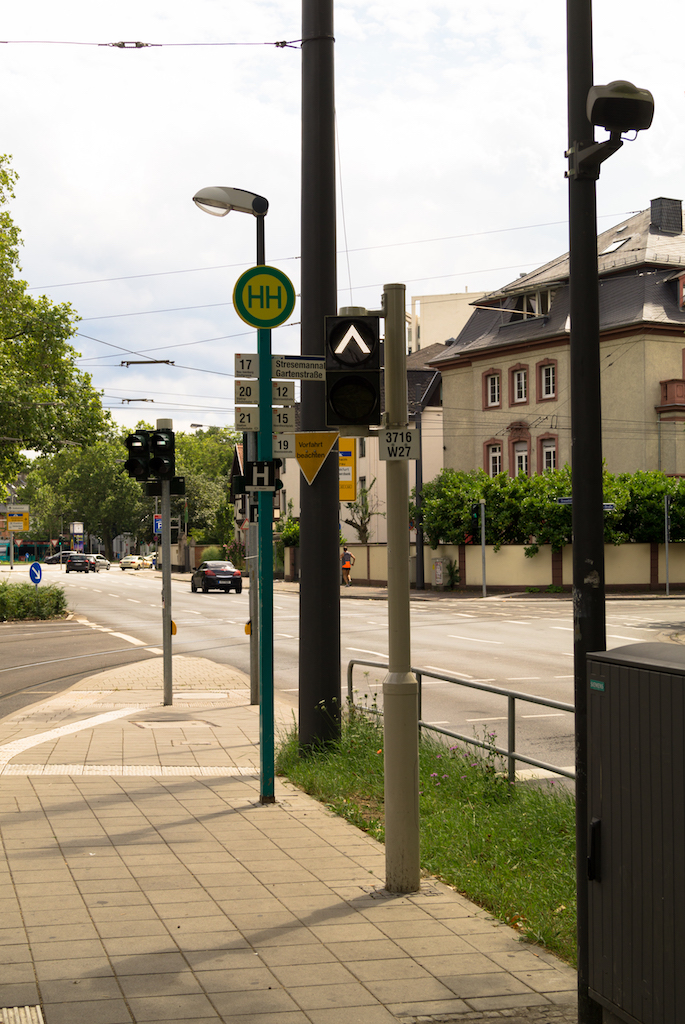
The older type of point signal used in Frankfurt does look similar to our point signals, with the above exceptions. I noticed points take noticeably longer to set, thereby also yielding a span of at least one second for the point signal to change aspects after point setting. I understand this is deliberate to ensure drivers paying proper attention to point setting.

At Stresemannallee/Gartenstraße, 251, advertising for the city friendship of Frankfurt and Tel Aviv, is waiting for the route while working Line 12 from Rheinlandstraße in Schwanheim to Hugo-Junkers-Straße in Fechenheim.
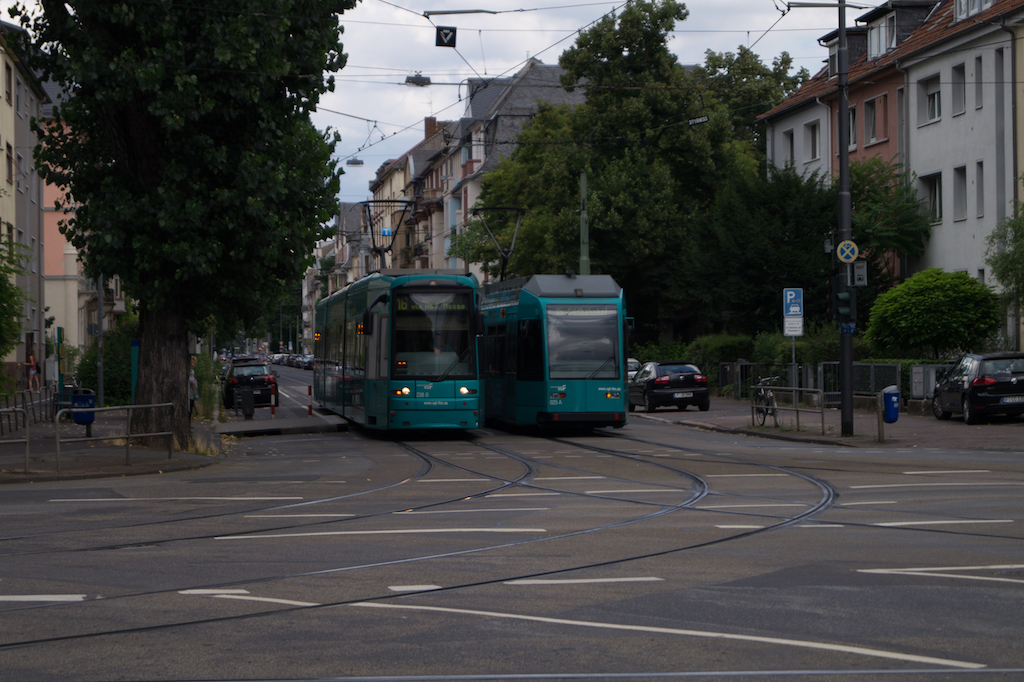
R Type tram 025 on Line 15 for Southern Station passes 238 on Line 16 for Ginnheim.
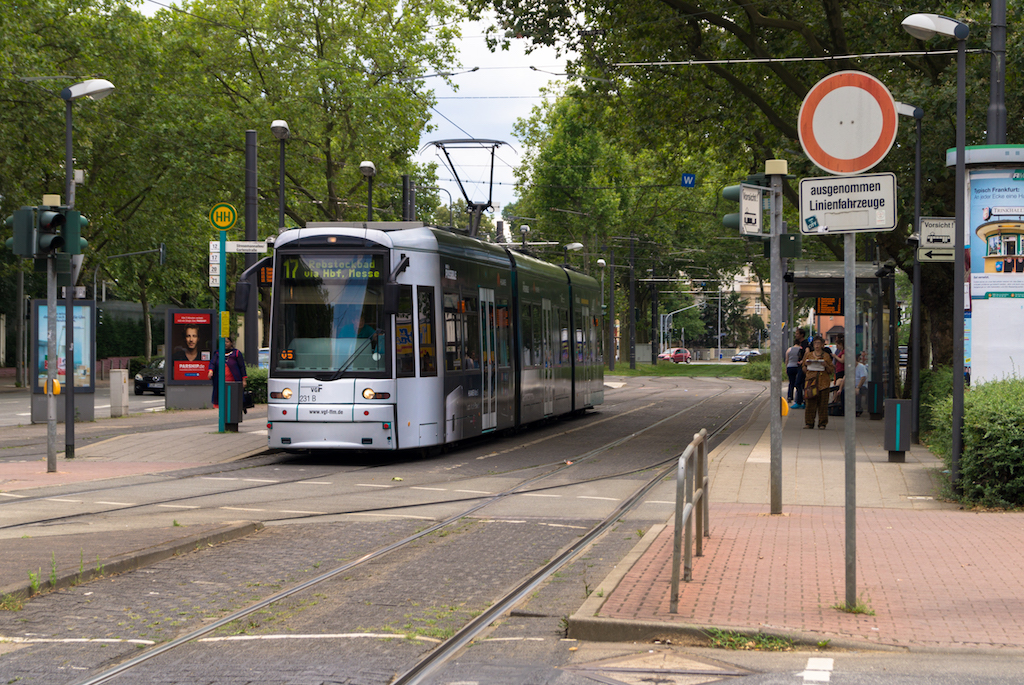
231 advertises for Huawei mobile devices and is seen here working Line 17 from Neu-Isenburg to the Rebstock Spa.

The very first of its kind: R Type tram 001 on Line 21 for Mönchhofstraße. These cars were quite innovative when they were first procured in 1993, with a second batch having followed in 1997. Offering a 100% low floor configuration on the strength of independent wheel running gears with eight 50 kW hub motors on the outer running gears, the R Type suffered from poor reliability for many years and required extensive readjustments to obtain acceptable operational stability. These trams were built by Siemens/Duewag, thus having many similarities to our NGT8s in interior appearance and cab design specifically.
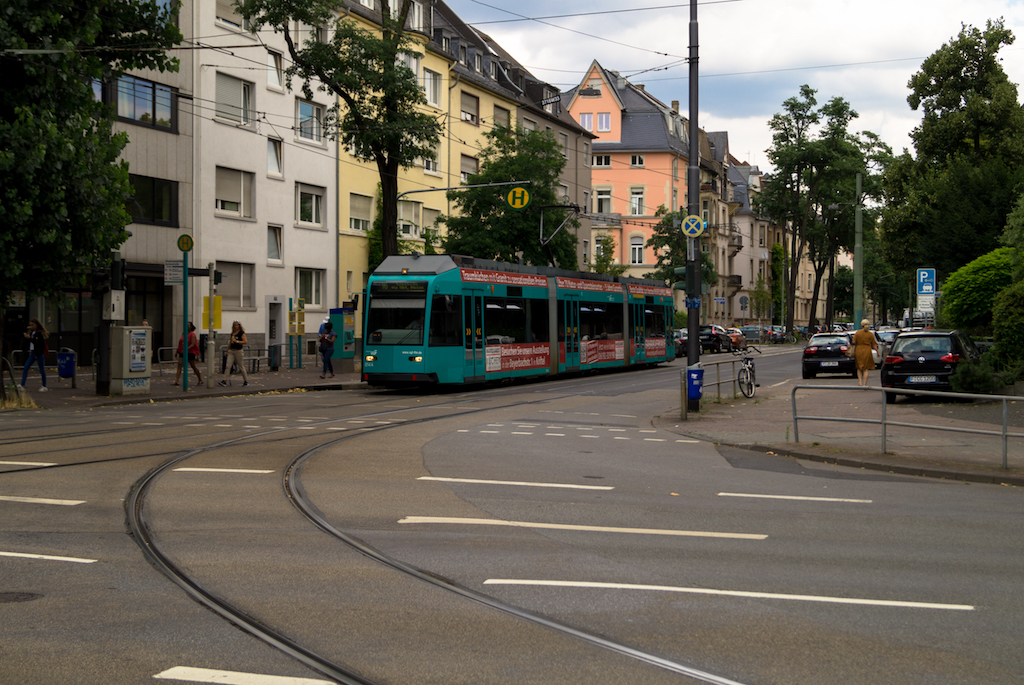
R Type car 014 was working Line 16 that day. Twenty-six of the R Types have been refurbished by this time, with this refurbishment mainly comprising a new passenger information system and interior styling similar to that of the S Types.

S Type 222 was on Line 15 to Haardtwaldplatz. These cars are MU capable, which is usually made use of for Line 20 specials to the Stadium for football matches and other major events there.
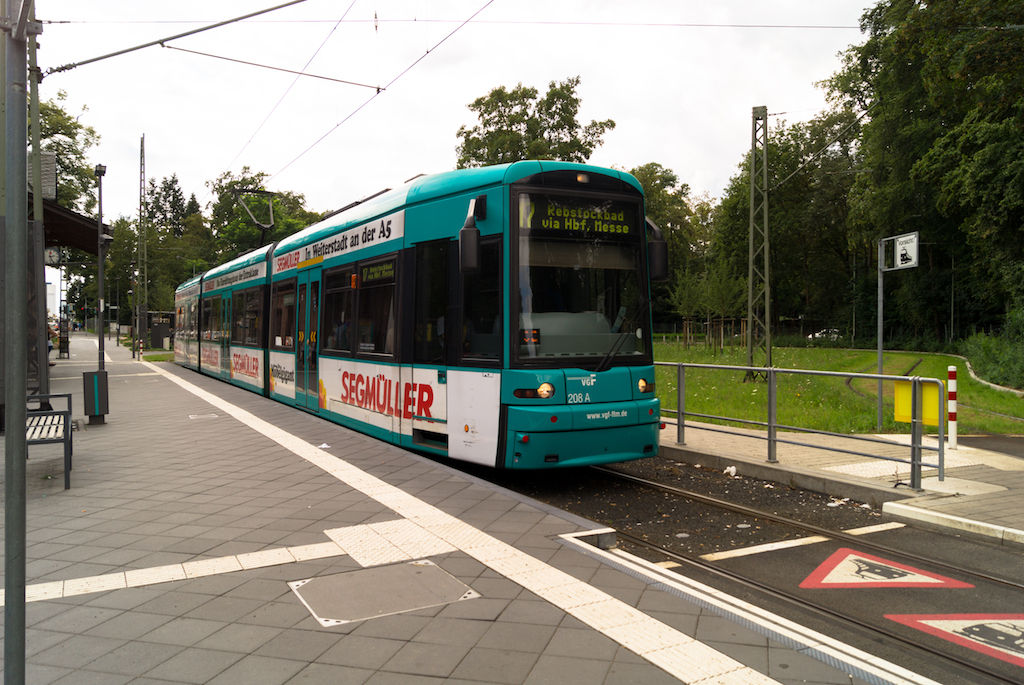
208 is sitting at the platform at the Neu-Isenburg loop. The tram line terminates at the city limits, though suggestions and encouragements for extending it into Neu-Isenburg proper keep reappearing.

The Neu-Isenburg route passes through the forest in the south of Frankfurt. Here, 232 is calling at the Oberschweinstiege stop.
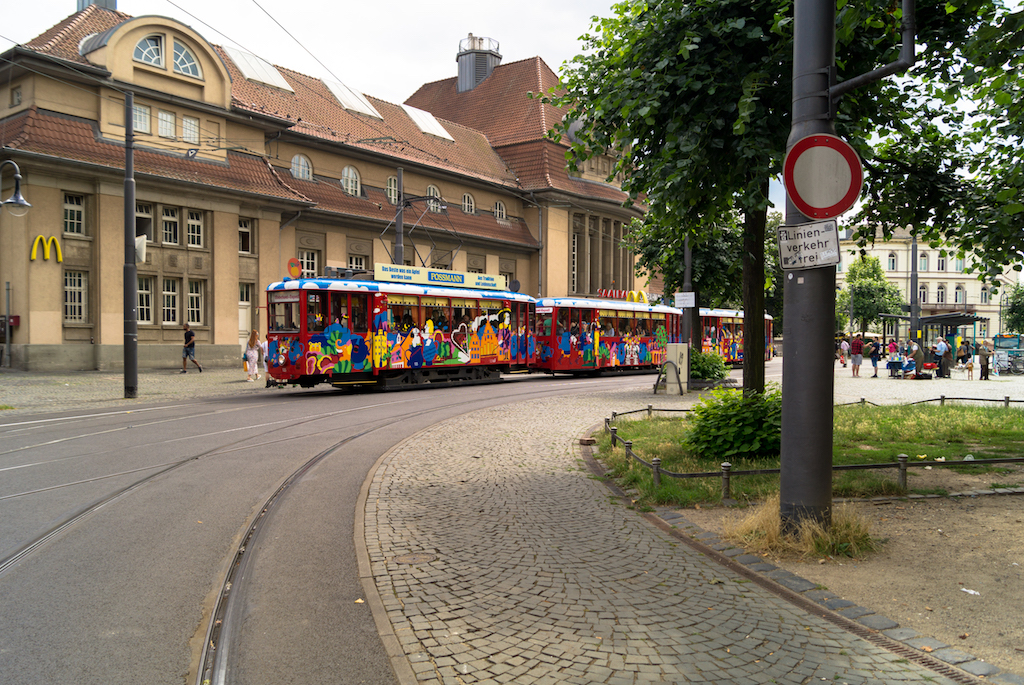
The "Cider Express" or "Ebbelwei-Express" in German is a tourist and city tour line worked with suitably refurbished K Type motor cars and k type trailers, originally built from 1949 till 1955 and representing the last four-wheel tram stock procured for Frankfurt. One set is seen here on Diesterwegplatz right outside Southern Station.
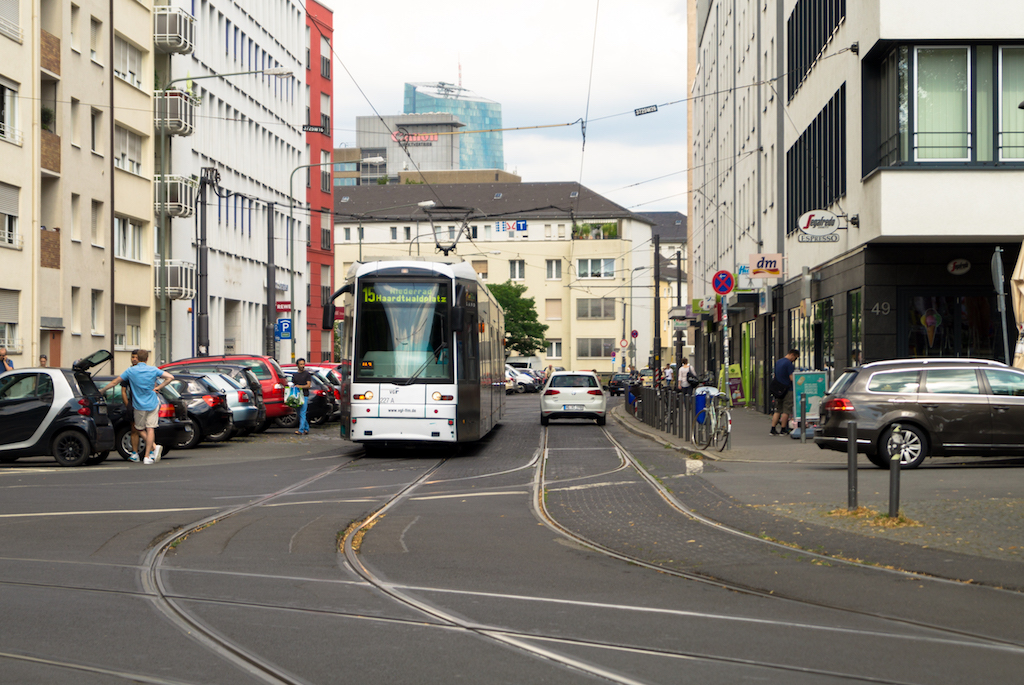
At Southern Station, Line 15 reverses in a stub on Hedderichstraße. Here, 227 is moving out of that stub for its next trip to Haardtwaldplatz.

R Type 035 is travelling along Brückenstraße on a Line 14 service for Louisa Station.

This is the Haardtwaldplatz loop at the western end of Line 15, with 011 sitting at the arrival point.
On Sunday, I then dedicated some time to revisiting the light rail lines. Having ridden up to Ginnheim on Line 16…
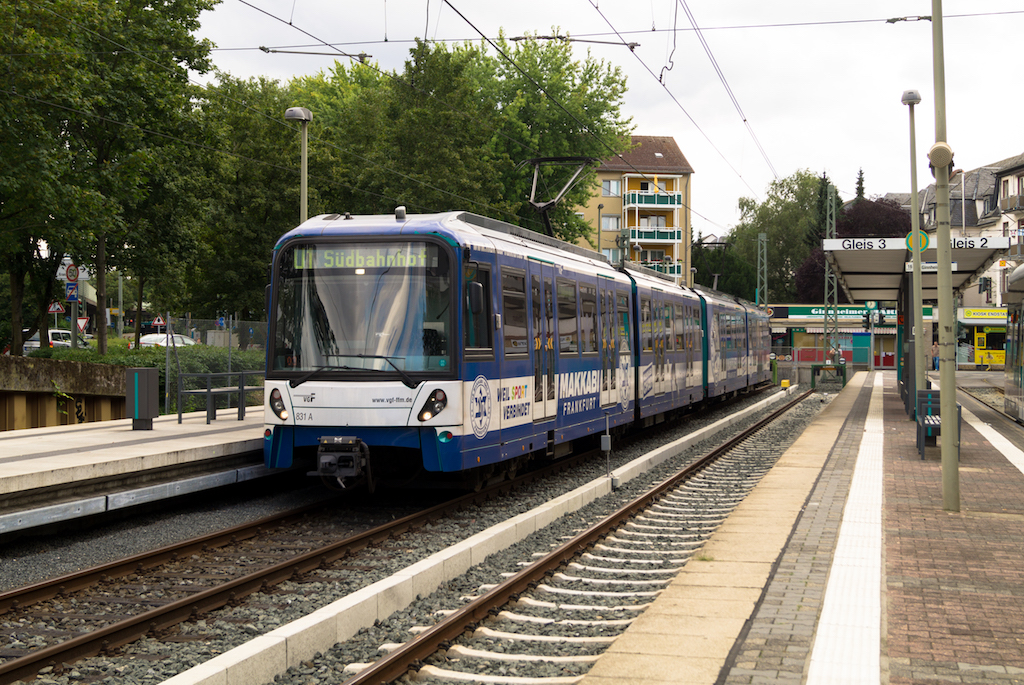
…where the pair of U5-50 cars 831/832 was standing by for a trip on Line U1 to Southern Station. This pair of LRVs advertises for the TuS Makkabi sports association.
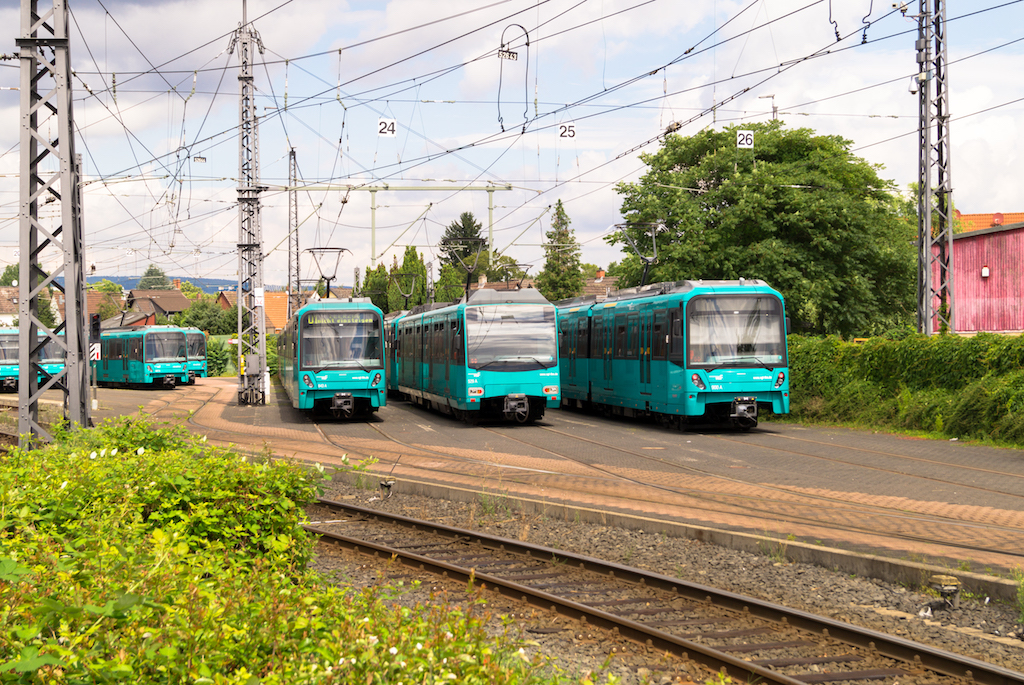
The "A Route" lines U1, U2, U3, U8 and U9 are supplied by Heddernheim Depot, where numerous LRVs were stabled on this quiet morning. The formation in the middle between the two U5 Type sets is a mixed formation of U4 and U5 Type stock, with these types having been given cross-type compatibility. The U4 car seen here at the head of that formation is 529, with the cab A/C rooftop pods being easily visible.
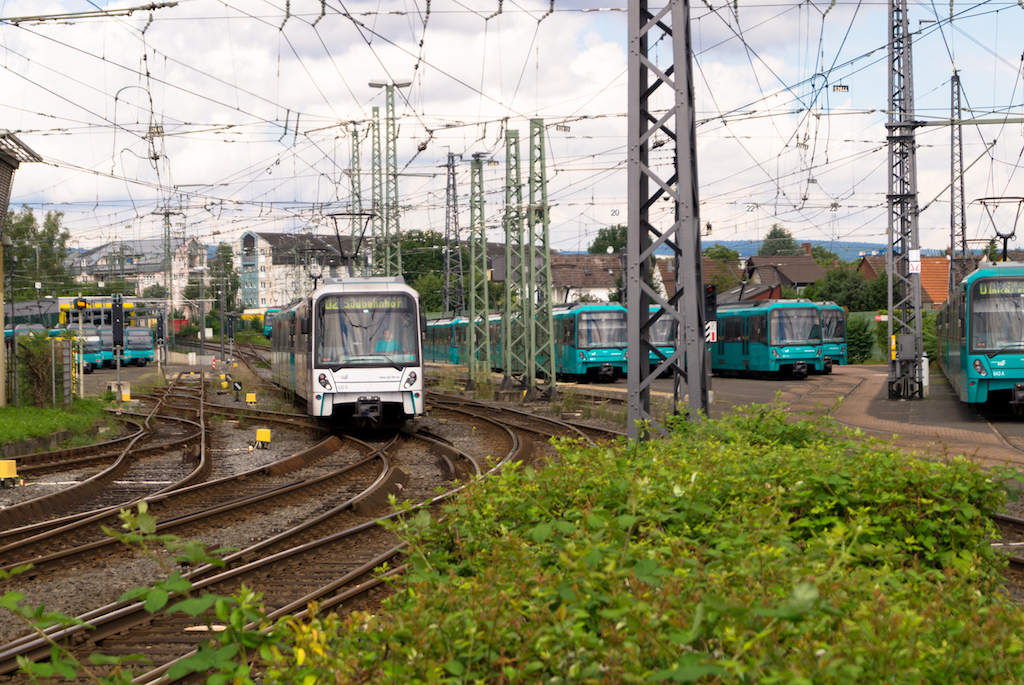
This pair of U5-25 stock on Line U2 was headed by 630. The U5 Stock cars were ordered in two-cab and back to back single-cab versions, designated U5-25 and U5-50 respectively. These LRVs are Bombardier Flexity Swift derivatives, and therefore distantly related to our NGT12s and Frankfurt's S Type.

Two U5 Stock sets passing each other, with 810 leading on the inbound U3 service and 621 trailing on the outbound U1 service.

814 is in the lead on this U8 service travelling inbound from Riedberg.
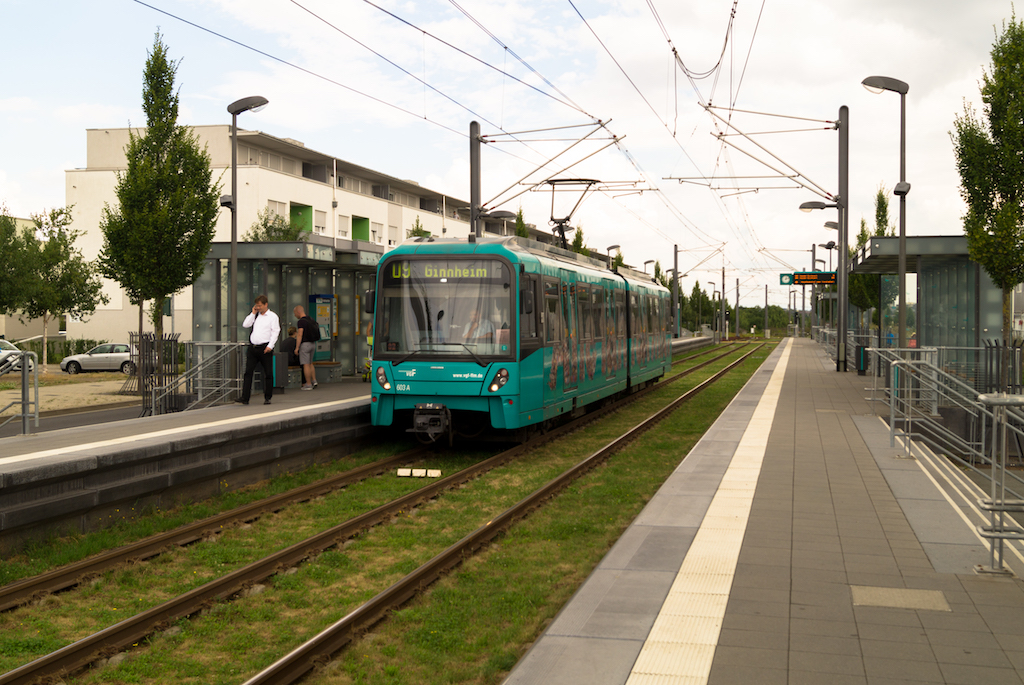
Riedberg is a borough almost entirely developed from scratch, and located in the north of Frankfurt. In addition to Line U8 travelling along the A Route trunk, Line U9 is set up to work the tangential Ginnheim – Nieder-Eschbach relation, and usually booked with single U4 or U5 type cars.

And to round off this photo strip, 819 leads this U8 service for Southern Station, with the reversing stub for U8 services being located further in the background beyond the platforms.
-
 2
2




2 Comments
Recommended Comments
Create an account or sign in to comment
You need to be a member in order to leave a comment
Create an account
Sign up for a new account in our community. It's easy!
Register a new accountSign in
Already have an account? Sign in here.
Sign In Now